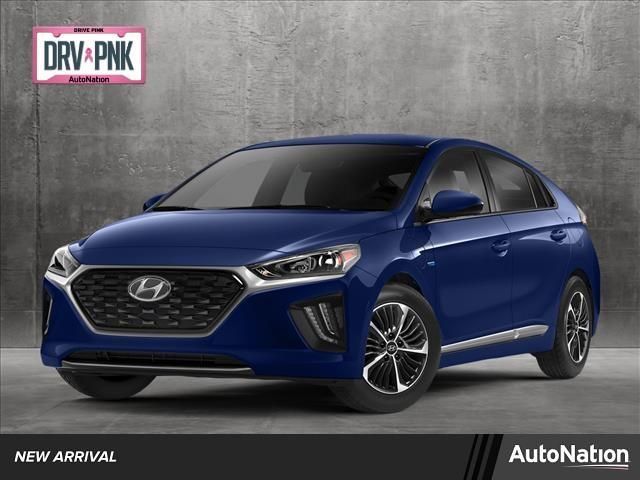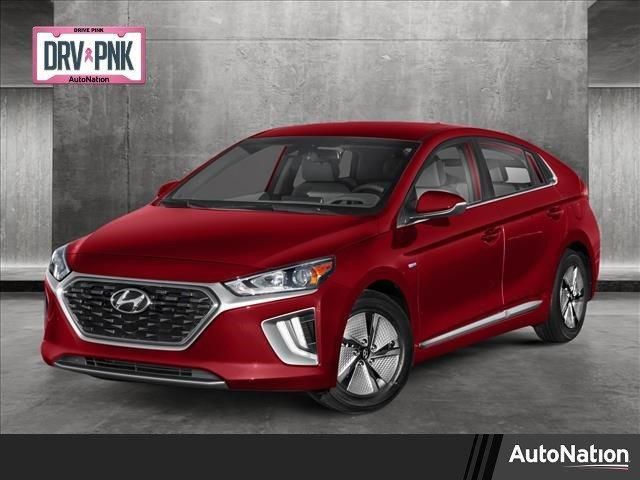2019 HYUNDAI IONIQVIN: KMHC65LD7KU168913

Historical Records
Collision damage reported
 Window Sticker
Window Sticker
- Manufacturer's Suggested Retail Price (MSRP)
- Engine and Transmission Specifications
- Equipment, Packages, and Extra Features
- Fuel Economy Rating
- Other Information

| Year | 2019 |
| ODO | 751 mi |
| Seller | Hidden text (Hidden text) |
| MSRP | $7117 |
| Location | College Park, MD, 20740 |
| Date | appeared 5 years ago latest price $7487 sale post disappeared 2020-12-28 |
| Price History | |
| Sale Website Type | classifieds |
| Notes | |
| 2692 | |
| Body Style | Hatchback |
| Color | Summit Gray Pearl |
| Color (Interior) | Charcoal Black |
| Transmission | 6-Speed Automatic with Auto-Shift |
| Engine | 1.6L I4 16V GDI DOHC Hybrid |
| Drive | FWD |
| Fuel Type | Hybrid |
- ABS,4-Wheel Disc Brakes
- Hidden text
- Carpeted Floor Mats
- Hidden text
- Front Wheel Drive
- Hidden text
- Multi-Zone A/C
- Hidden text
- Rear Bench Seat
- Hidden text
- Tire Pressure Monitor
- Hidden text
- Automatic Headlights
- Hidden text
- Child Safety Locks
- Hidden text
- Heated Front Seat(s)
- Hidden text
- Pass-Through Rear Seat
- Hidden text
- Rear Head Air Bag
- Hidden text
- Tires - Rear Performance
- Hidden text
- Back-Up Camera,
- Hidden text
- Cloth Seats
- Hidden text
- Intermittent Wipers
- Hidden text
- Adjustable Steering Wheel
- Hidden text
- CARGO NET -inc: For trunk
- Hidden text
- Front Head Air Bag
- Hidden text
- Leather Steering Wheel
- Hidden text
- Wheel Locks -Inc: Wheel Lug That Prevents Theft
- Hidden text
- Passenger Air Bag
- Hidden text
- Brake Assist
- Hidden text
- Requires Subscription
- Hidden text
- Rear Spoiler
- Hidden text
- Driver Illuminated Vanity Mirror
- Hidden text
- Variable Speed Intermittent Wipers
- Hidden text
- Traction Control
- Hidden text
- Option Group 01 -Inc: Standard Equipment
- Hidden text
- Rear Defrost
- Hidden text
- Tires - Front Performance
- Audio controls on steering wheel
- Hidden text
- Coil front spring
- Hidden text
- Dusk sensing headlights
- Hidden text
- Heated passenger mirror
- Hidden text
- Piano black center console trim
- Hidden text
- Bluetooth Wireless Phone Connectivity
- Hidden text
- Daytime Running Lights
- Hidden text
- Front Ventilated disc brakes,1st and 2nd row curtain head airbags
- Hidden text
- Interior air filtration
- Hidden text
- Privacy glass: Light
- Hidden text
- Cargo area light
- Hidden text
- Driver knee airbags
- Hidden text
- Fuel Type: Regular unleaded
- Hidden text
- Lithium polymer electric motor battery
- Hidden text
- Regular front stabilizer bar
- Hidden text
- Strut front suspension
- Hidden text
- Bucket Front Seats
- Hidden text
- Driver And Passenger Heated-Cushion
- Hidden text
- Fuel Capacity: 11.4 gal.
- Hidden text
- Leather/metal-look steering wheel trim
- Hidden text
- Rear spoiler: Lip
- Hidden text
- Stability Control
- Hidden text
- Rear seats center armrest
- Hidden text
- Split rear bench
- Hidden text
- Vehicle Emissions: LEV3-SULEV30
- Hidden text
- Speed-proportional electric power steering
- Hidden text
- Trip Computer
- Hidden text
- Total Number of Speakers: 6
- Hidden text
- Video Monitor Location: Front
- Hidden text
- Clock: In-dash
- Hidden text
- Dual front air conditioning zones
- Hidden text
- Headlights off auto delay
- Hidden text
- Multi-
- Hidden text
- Remote activated exterior entry lights
- Hidden text
- Suspension class: Regular
- Hidden text
- Wheel Width: 6.5
Model Analytics & Market Report
Depreciation
| Year | Average Mileage | Average Price | % Left | % Lost | ||
|---|---|---|---|---|---|---|
| 2019 MSRP | 0 mi | $27,050 | — | — | 100% | 0% |
| 2021 | 34,227 mi | $21,498 | +$0 | +0% | 79.48% | 20.52% |
| 2022 | 45,636 mi | $19,950 | +$1,548 | +7.2% | 73.75% | 26.25% |
| 2023 | 57,045 mi | $18,123 | +$1,827 | +9.16% | 67% | 33% |
| → Visit 2019 HYUNDAI IONIQ depreciation page to see full data. | ||||||
Price vs Mileage
| Mileage | Average Price | Sample Size |
|---|---|---|
| 5,000 mi | $23,599 | 65 sales |
| 10,000 mi | $23,595 | 131 sales |
| 15,000 mi | $22,810 | 242 sales |
| 20,000 mi | $21,959 | 339 sales |
| 25,000 mi | $21,998 | 416 sales |
| 30,000 mi | $20,999 | 448 sales |
| → Visit 2019 HYUNDAI IONIQ depreciation page to see full data. | ||
VIN Decoder — 36 records
A TPMS is an electronic system designed to monitor the air pressure inside the pneumatic tires on various types of vehicles. TPMS can be divided into two different types - direct and indirect. Direct TPMS employ pressure sensors on each wheel, either internal or external. The sensors physically measure the tire pressure in each tire and report it to the vehicle's instrument cluster or a corresponding monitor. Indirect TPMS does not use physical pressure sensors but measure air pressures by monitoring individual wheel rotational speeds and other signals available outside of the tire itself.
Engine displacement (in cubic centimeters) is the volume swept by all the pistons inside the cylinders of a reciprocating engine in a single movement from top dead center to bottom dead center.
Engine displacement (in cubic inches) is the volume swept by all the pistons inside the cylinders of a reciprocating engine in a single movement from top dead center to bottom dead center.
Engine displacement (in liters) is the volume swept by all the pistons inside the cylinders of a reciprocating engine in a single movement from top dead center to bottom dead center.
Electrification level defines to what level the vehicle is powered by electric system. The common electric system configurations are mild hybrid, strong hybrid, plug-in hybrid, battery electric, and fuel cell vehicles.
(1) Mild hybrid is the system such as 12-volt start-stop or 48-volt belt integrator starter generator (BISG) system that uses an electric motor to add assisting power to the internal combustion engine. The system has features such as stop-start, power assist, and mild level of generative braking features.
(2) Strong hybrid systems, in vehicles such as the Toyota Prius, mainly consist of motors, conventional gasoline engine, and battery, but the source of electrical charge for the battery power is provided by the conventional engine and/or regenerative braking.
(3) Plug-in hybrid systems, in vehicles such as the Toyota Rav4 Prime, mainly consist of motors, conventional gasoline engine and battery. Plug-in hybrid vehicles are like strong hybrids, but they have a larger battery pack and can be charged with an external source of electricity by electric vehicle supply equipment (EVSE).
(4) Battery electric vehicles (BEV), such as the Tesla Model S or Nissan Leaf, have only a battery and electrical motor components and use electricity as the only power source.
(5) Fuel cell electric vehicles (FCEV) use full electric drive platforms but consume electricity generated by onboard fuel cells and hydrogen fuel.
Engine brake is the horsepower (hp) at the engine output shaft. Engine Brake (hp) From is the lower value of the range.
This is a numerical field to store the number of cylinders in an engine. Common values for passenger cars are 4 or 6.
Fuel type defines the fuel used to power the vehicle. For vehicles that have two power sources, such as plug-in hybrid vehicle, both primary fuel type and secondary fuel type will be provided.
Body Class presents the body type based on 49 CFR 565.12(b): "Body type means the general configuration or shape of a vehicle distinguished by such characteristics as the number of doors or windows, cargo-carrying features and the roofline (e.g., sedan, fastback, hatchback)." Definitions are not provided for individual body types in the regulation.
Gross vehicle weight rating (GVWR) is the maximum operating weight of a vehicle including the vehicle's chassis, body, engine, engine fluids, fuel, accessories, driver, passengers and cargo, but excluding that of the trailers. Per 49 CFR 565.15, Class 1 is further broken down to Class A-D; Class 2 is further broken down to Class E-H. This field captures the lower bound of GVWR range for the vehicle.
Gross vehicle weight rating (GVWR) is the maximum operating weight of a vehicle including the vehicle's chassis, body, engine, engine fluids, fuel, accessories, driver, passengers and cargo, but excluding that of the trailers. Per 49 CFR 565.15, Class 1 is further broken down to Class A-D; Class 2 is further broken down to Class E-H. This field captures the higher bound of GVWR range for the vehicle.
Per 49 CFR 565, Model means a name that a manufacturer applies to a family of vehicles of the same type, make, line, series and body type.
If the model year (MY) is supplied when the VIN is decoded, such as from a crash report or a vehicle registration record, the MY value will be the supplied MY, even if the MY decoded from the VIN differs from the supplied MY. If the MY is not supplied when the VIN is decoded, the MY value will be decoded from the 10th character in the VIN.
This data element captures the city of the manufacturing plant where the manufacturer affixes the VIN.
This data element captures the country of the manufacturing plant where the manufacturer affixes the VIN.
This field captures the location of curtain air bags. Curtain air bags are side air bags that protect the head.
This field captures the location of frontal air bags. Frontal air bags are generally designed to deploy in "moderate to severe" frontal or near-frontal crashes.




































